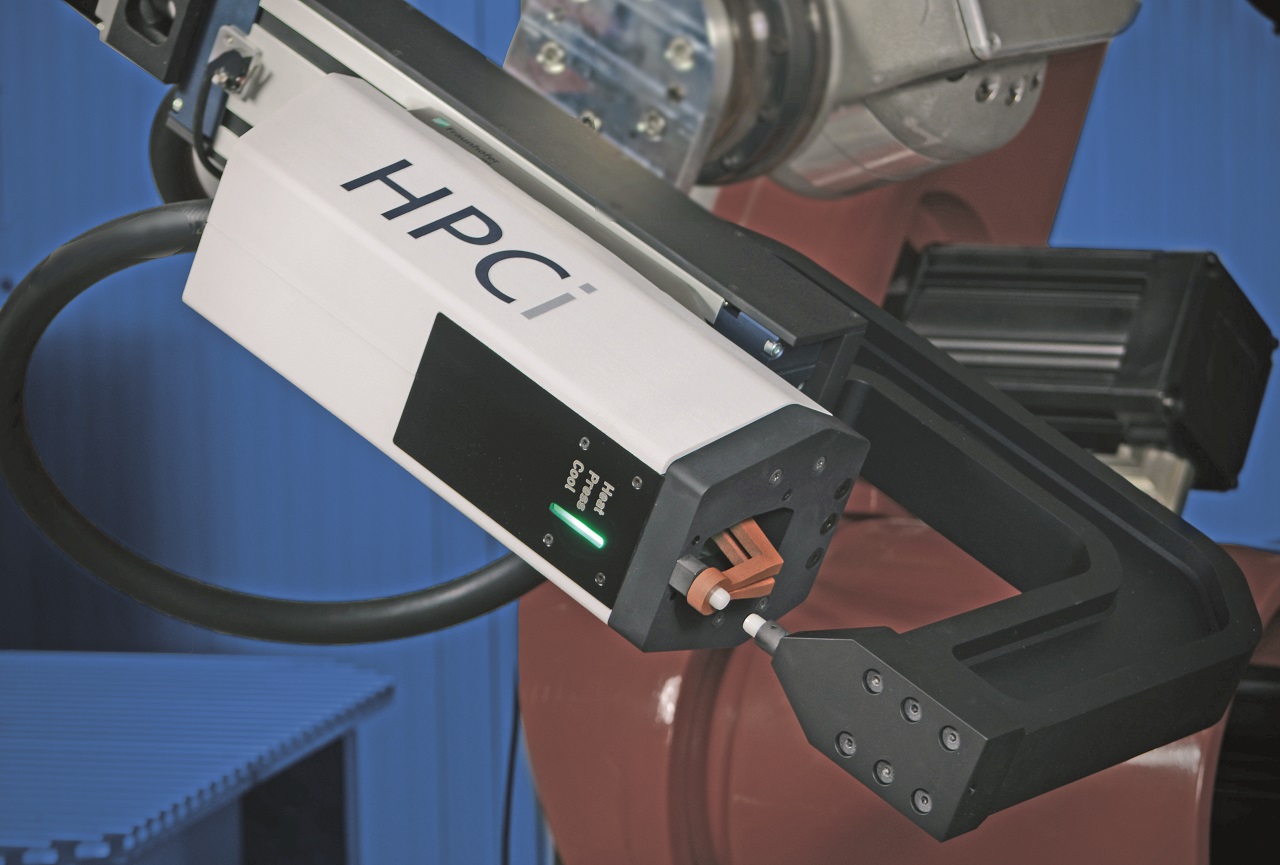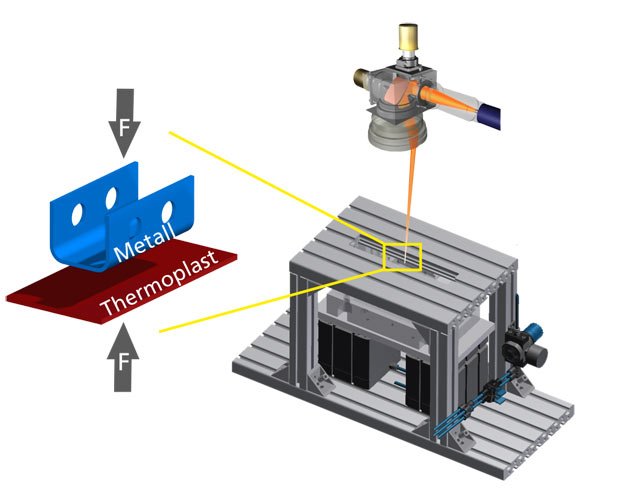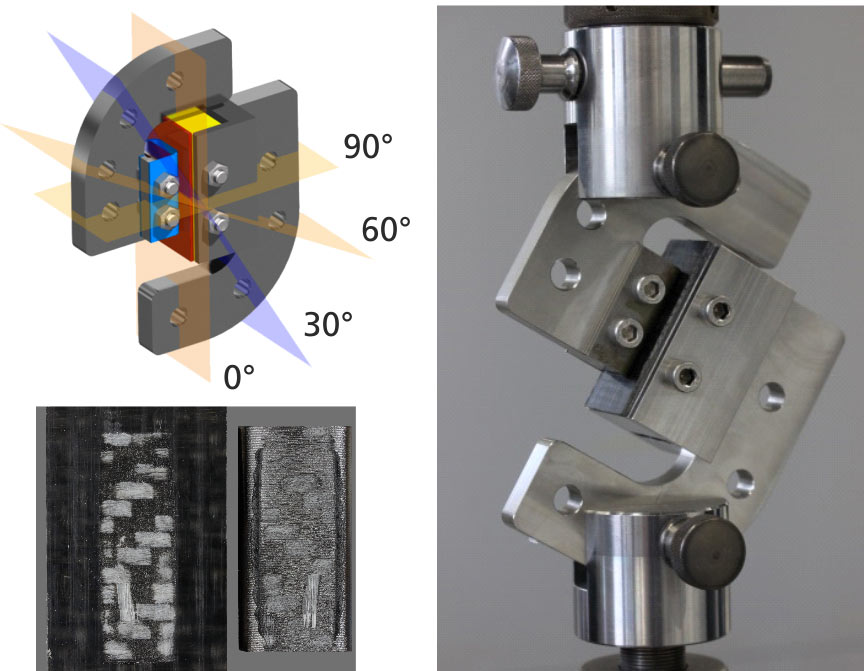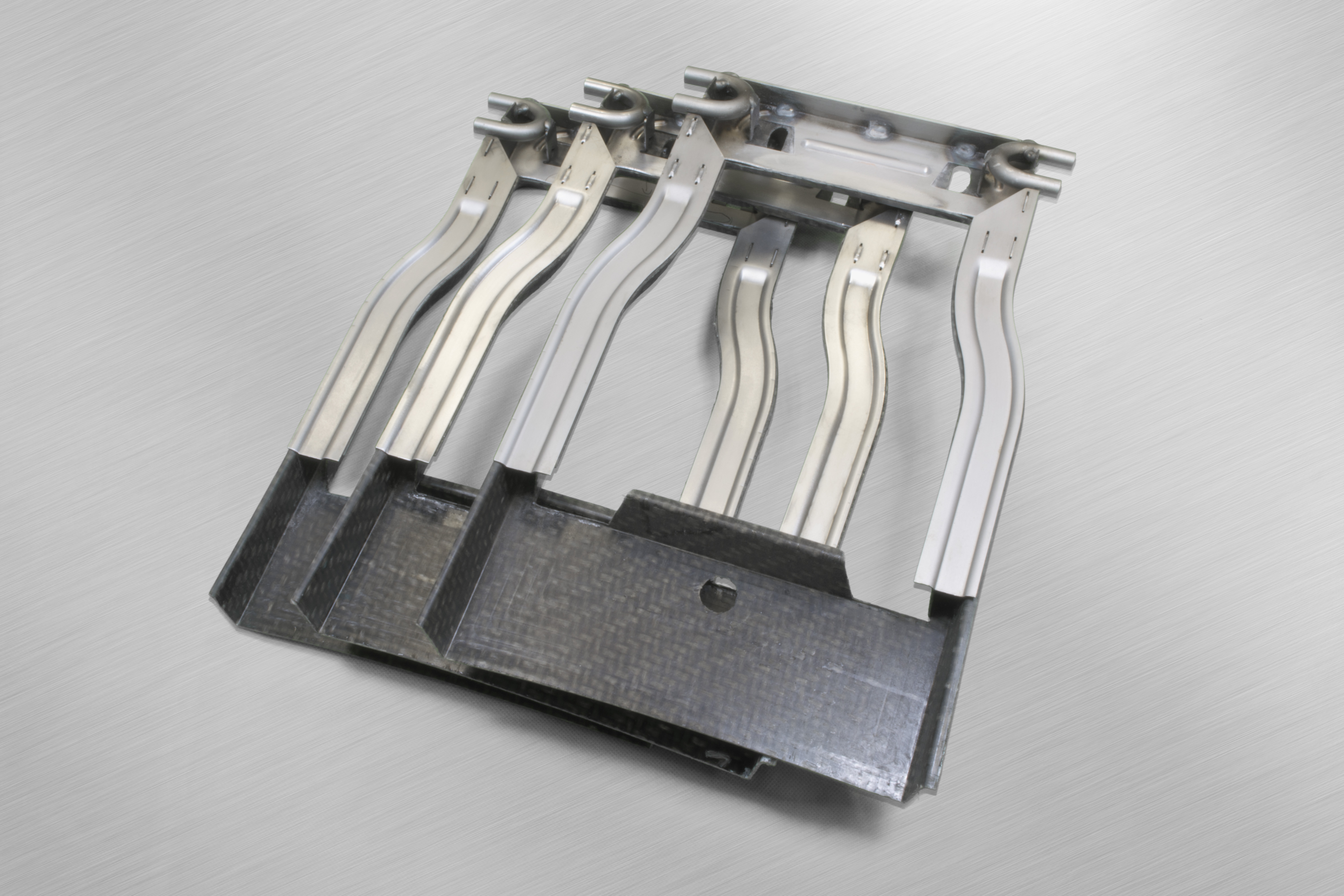HPCi® technology for thermal direct joining of fiber - reinforced composities to metal
Load-adapted multi-materials combining the material-specific advantages of metal and thermoplastics are becoming more and more important for applications in industry, above all in lightweight construction. For this purpose, it is necessary to find efficient process chains that use - aligned with the specific load - an optimized pre-processing and joining technology, as well as modified tools for process simulation and feature characterization.
Post- and in-mould assembly processes, mechanical joining methods, such as screwing and riveting, and adhesive bonding are techniques that actually have been commercially available to reliably manufacture joints consisting of heterogeneous materials. Specific limitations of these technologies mainly arise from:
- Limitations in geometry complexity
- Local cross section thinning and impaired force flow in fiber reinforced polymers (FRP)
- The necessity of using additional materials
- Longer process times.
Consequently, new joining techniques that work quickly without the above mentioned limitations were sought.
 Fraunhofer Institute for Material and Beam Technology IWS
Fraunhofer Institute for Material and Beam Technology IWS


